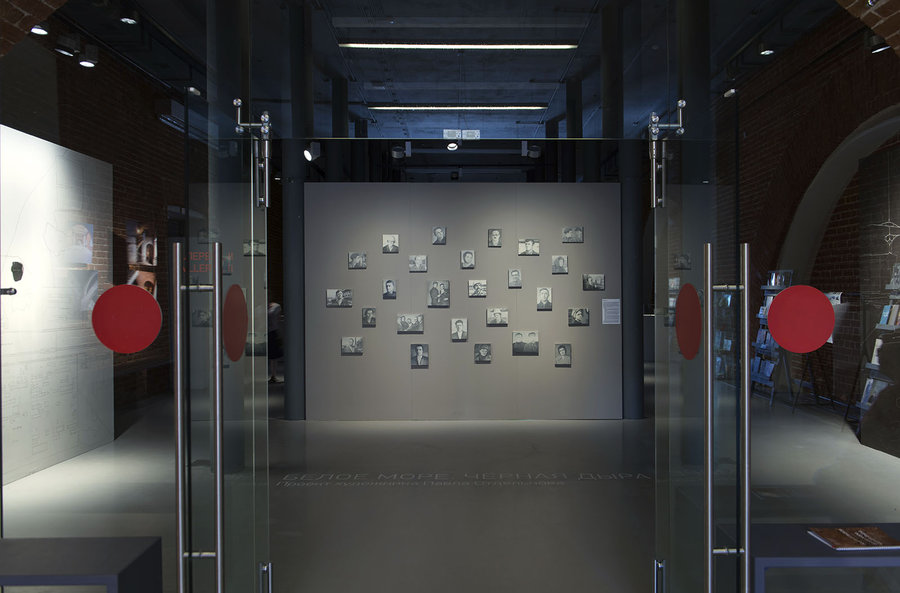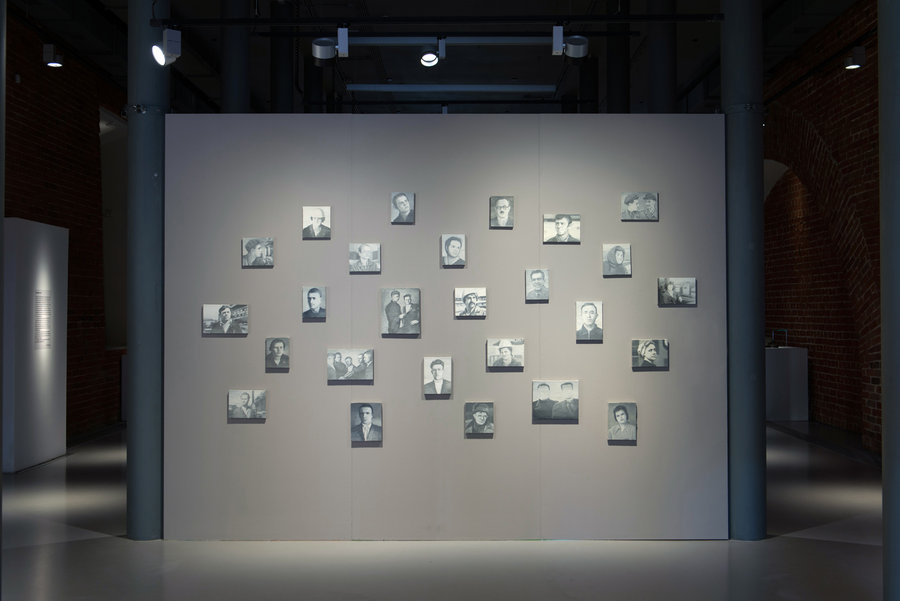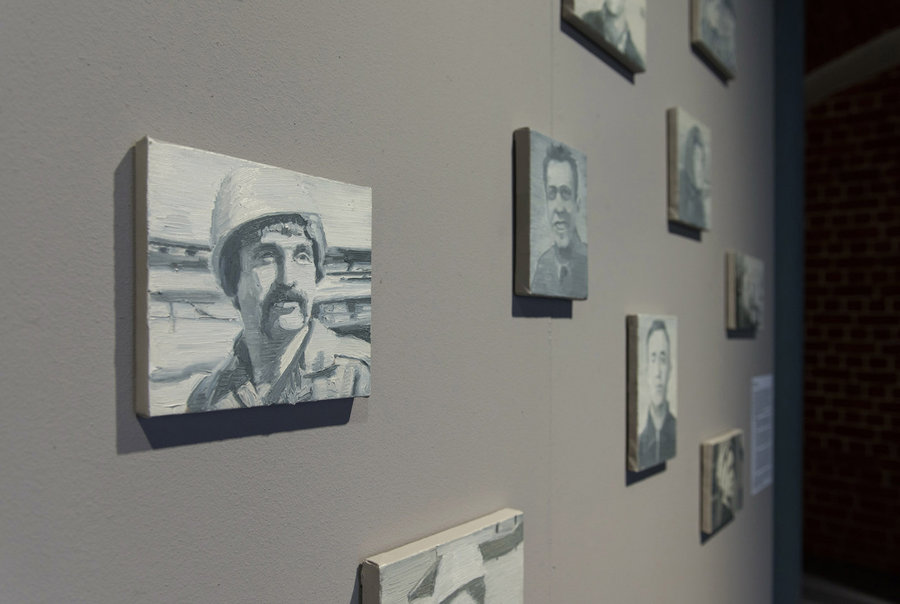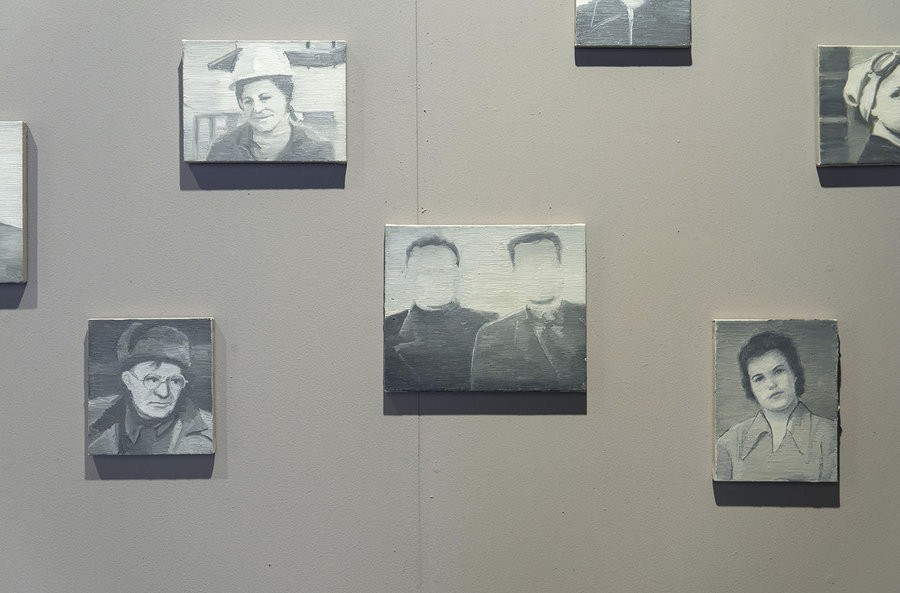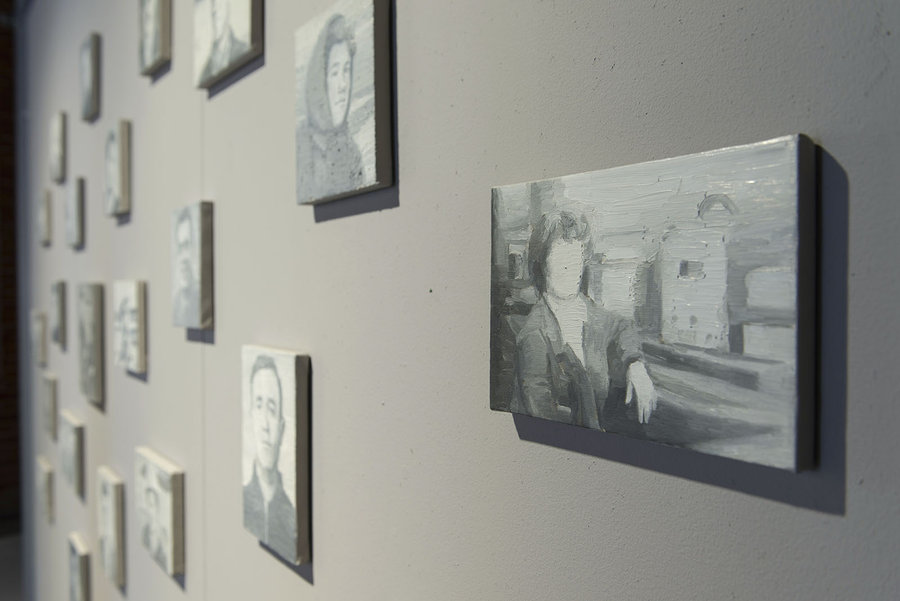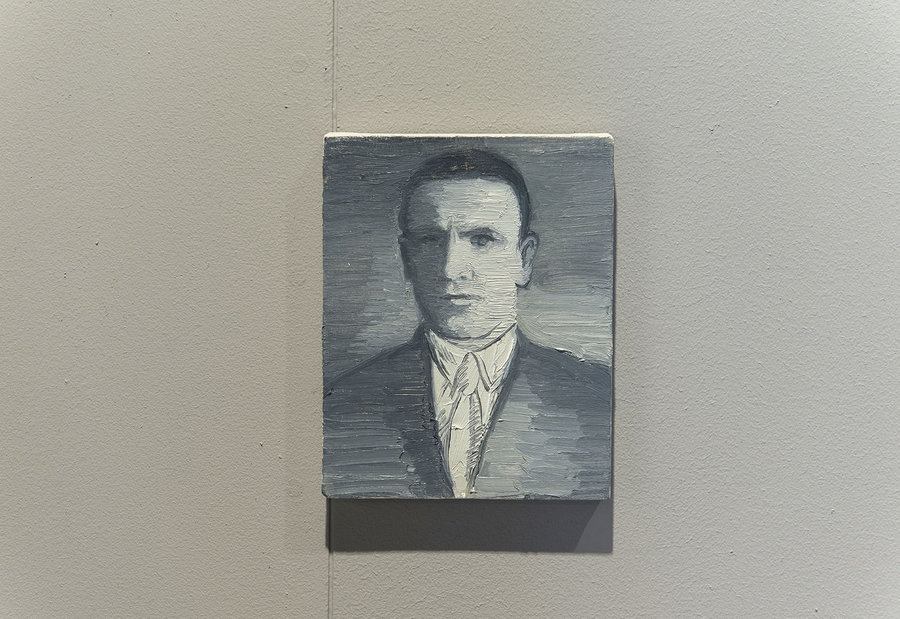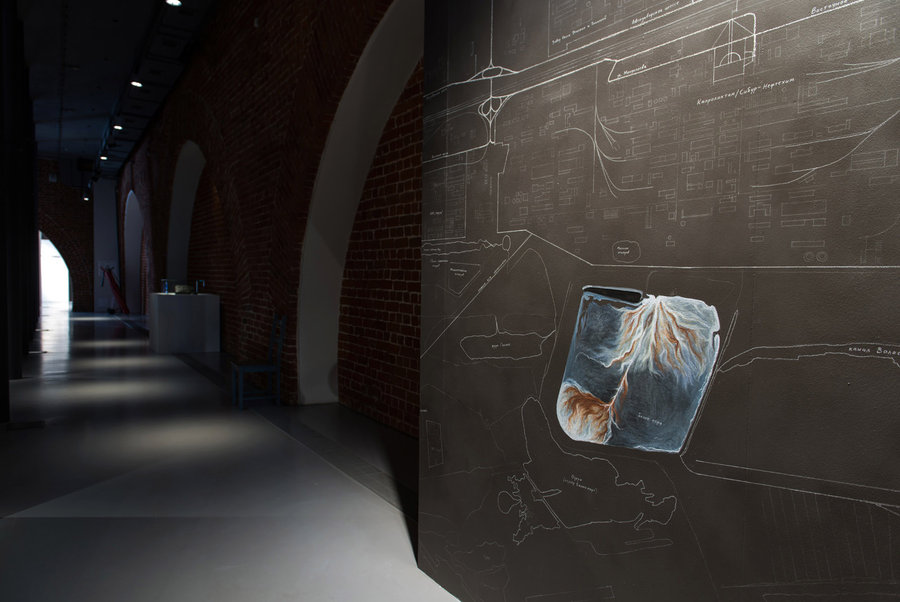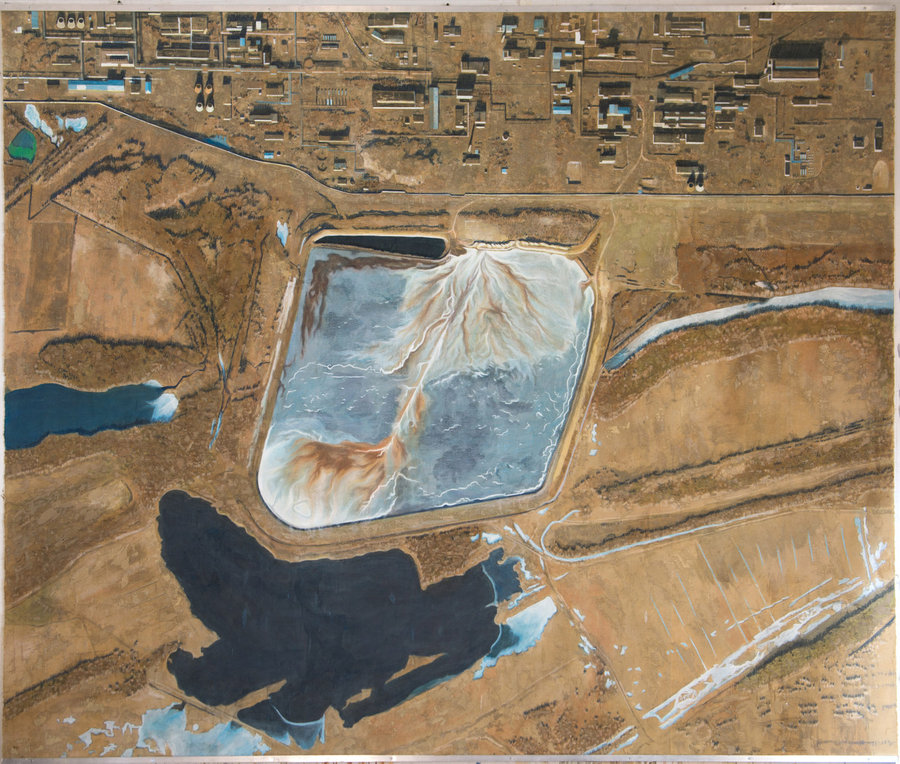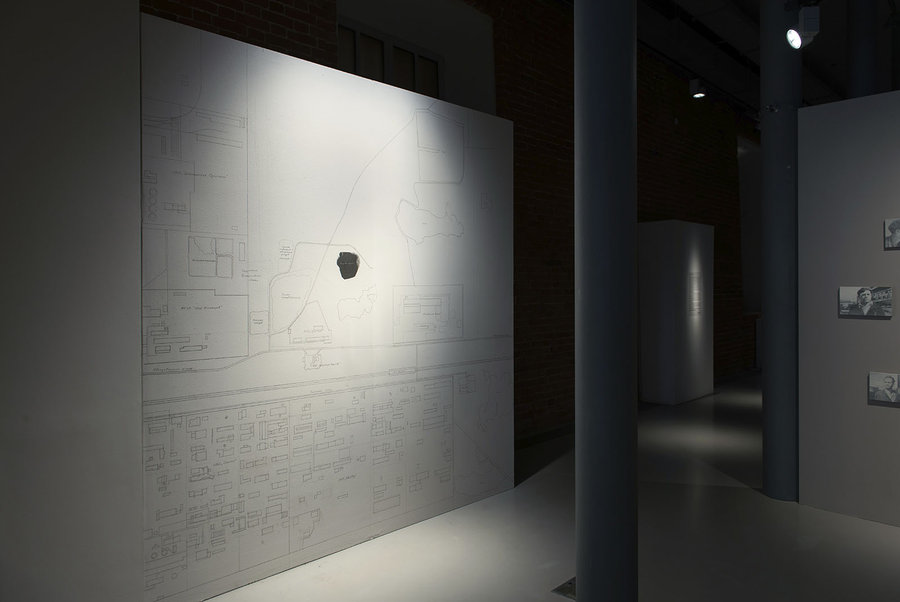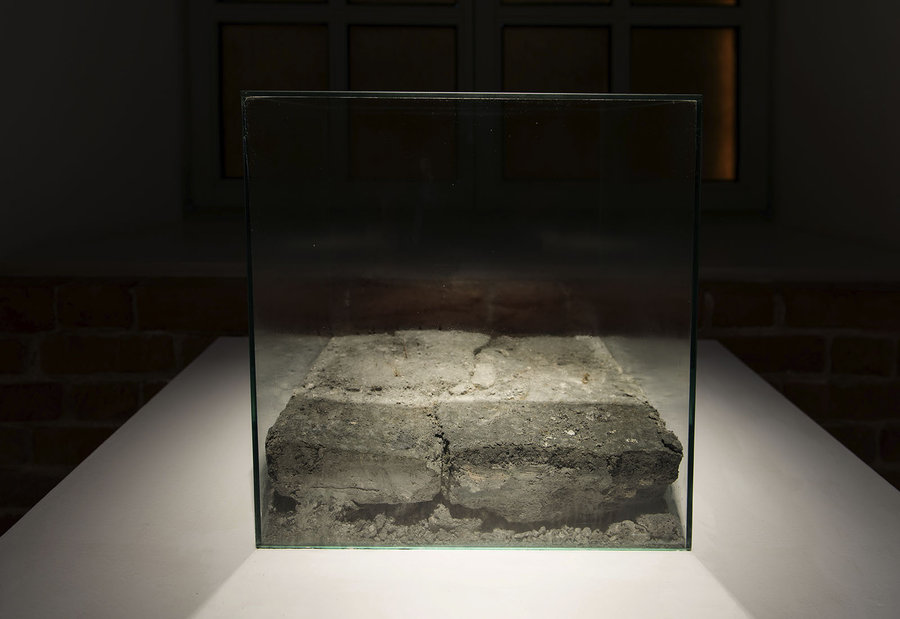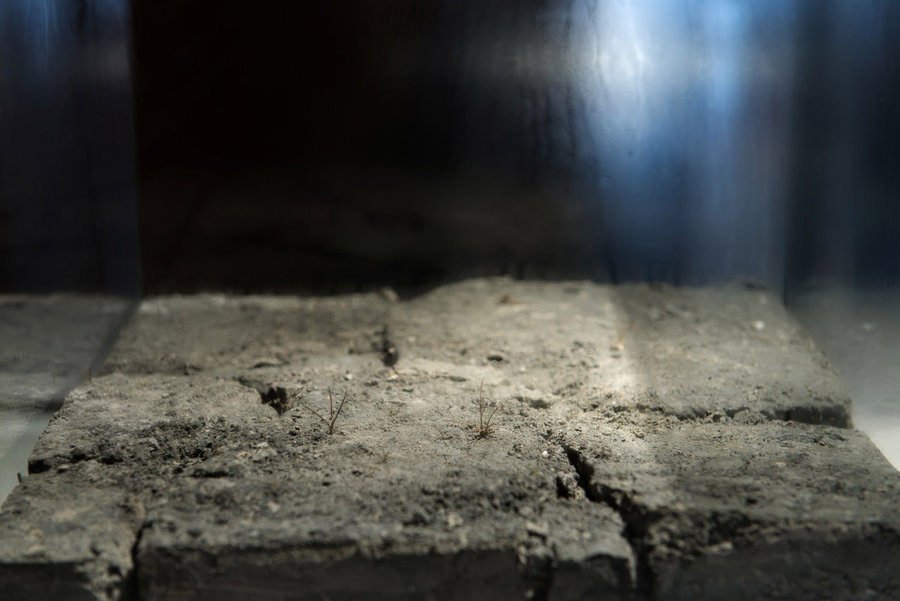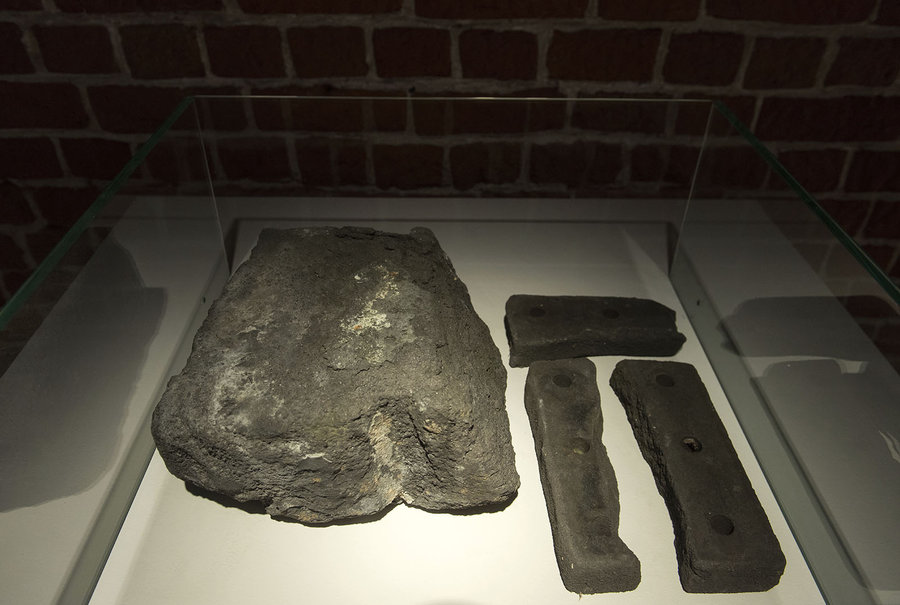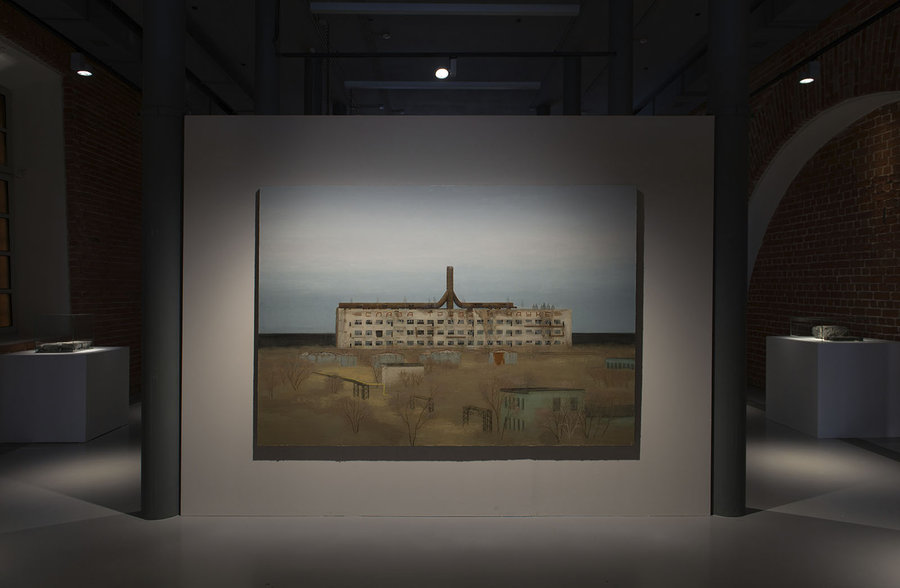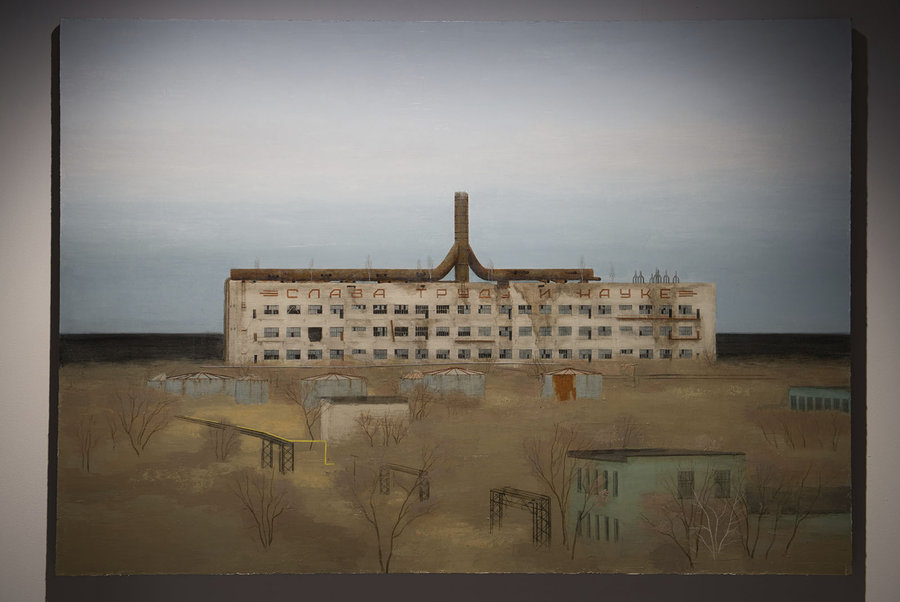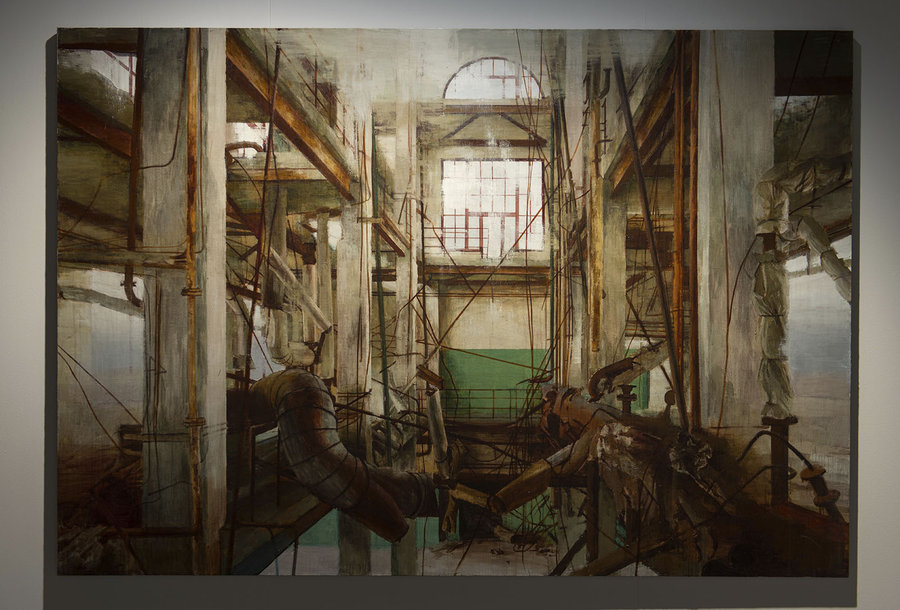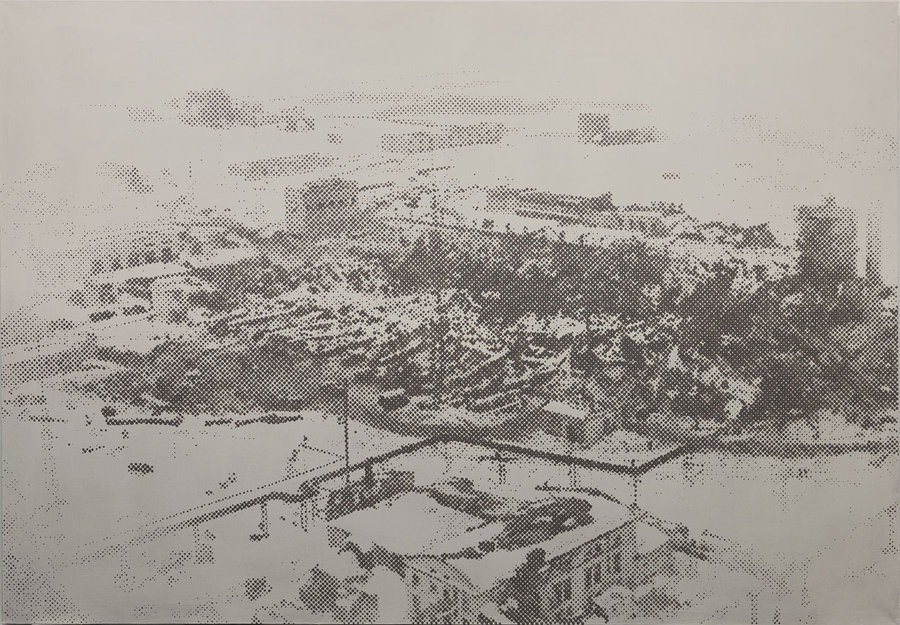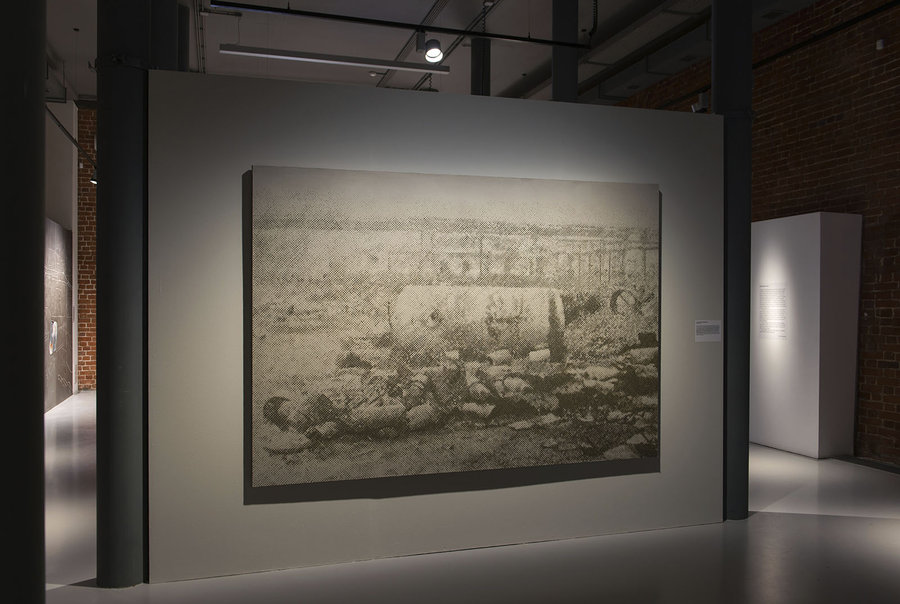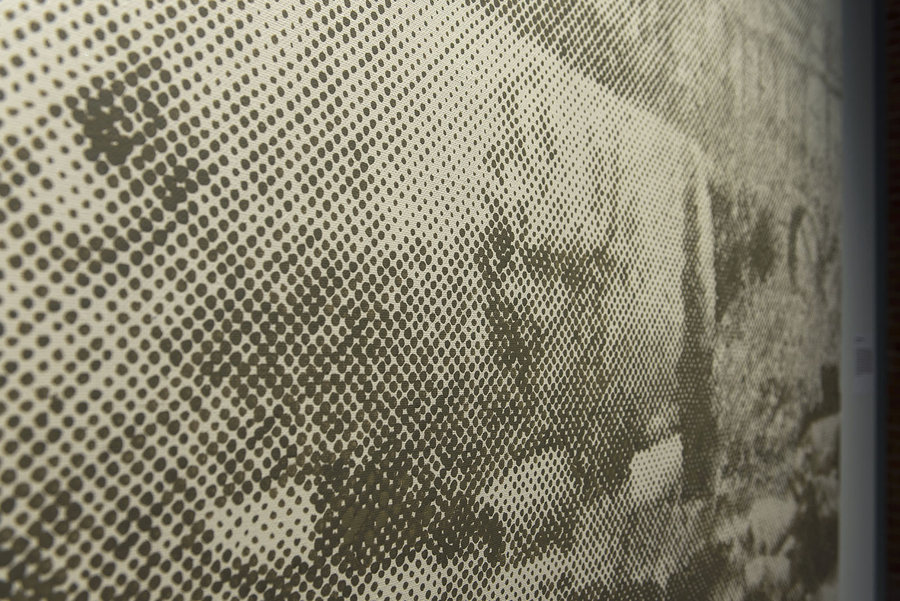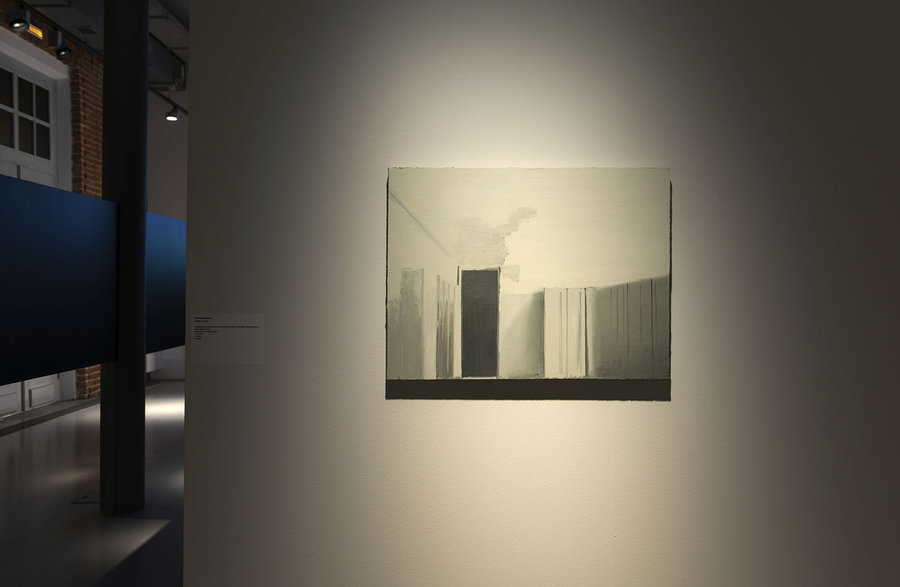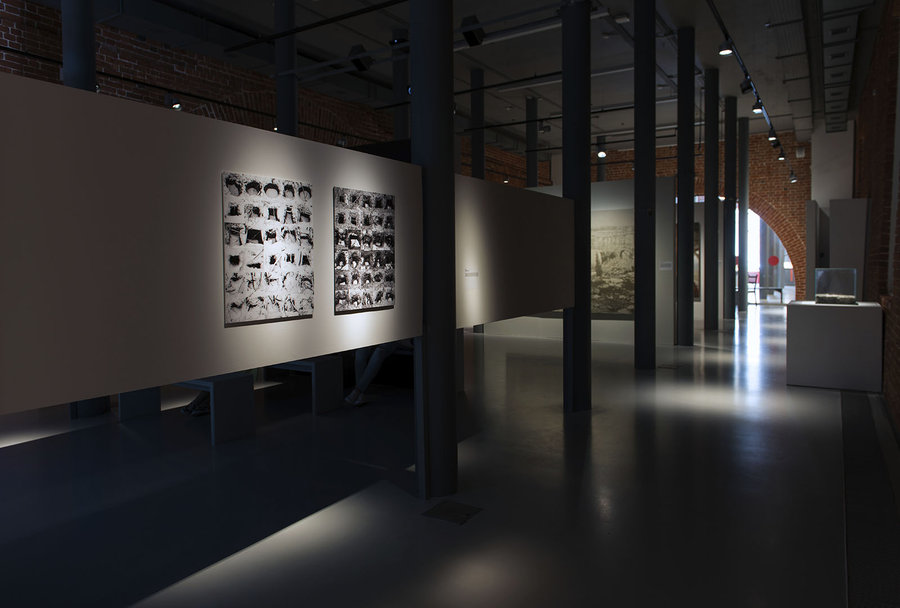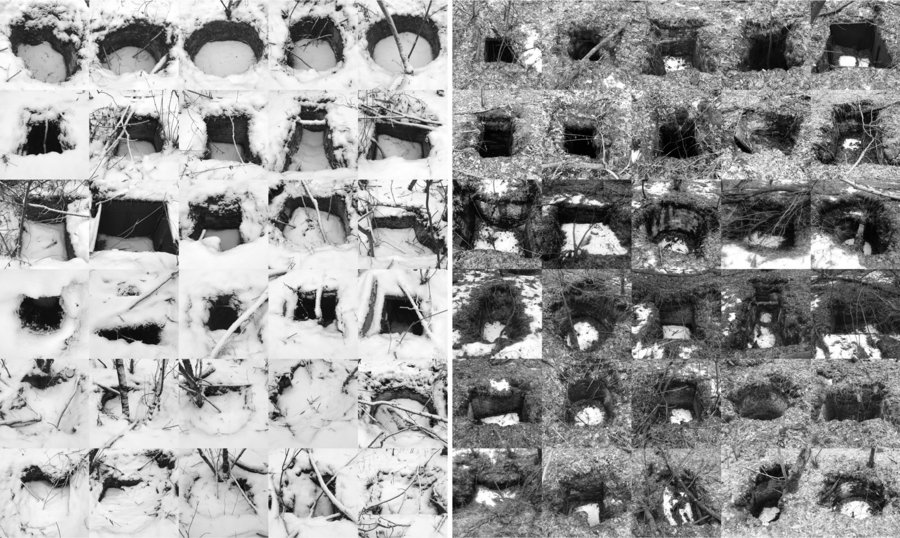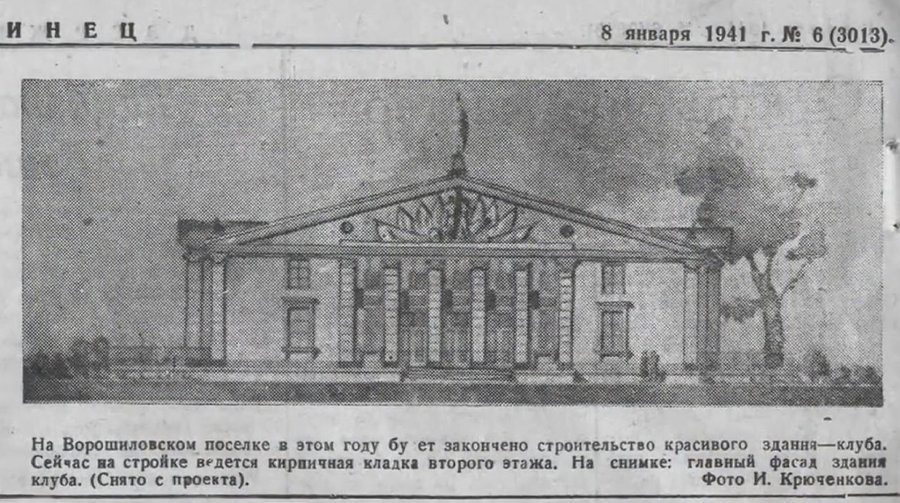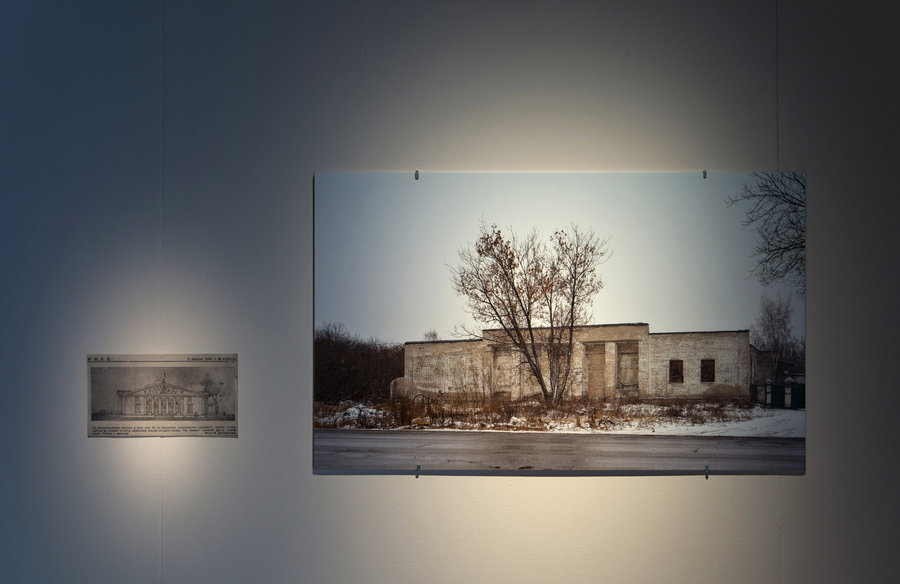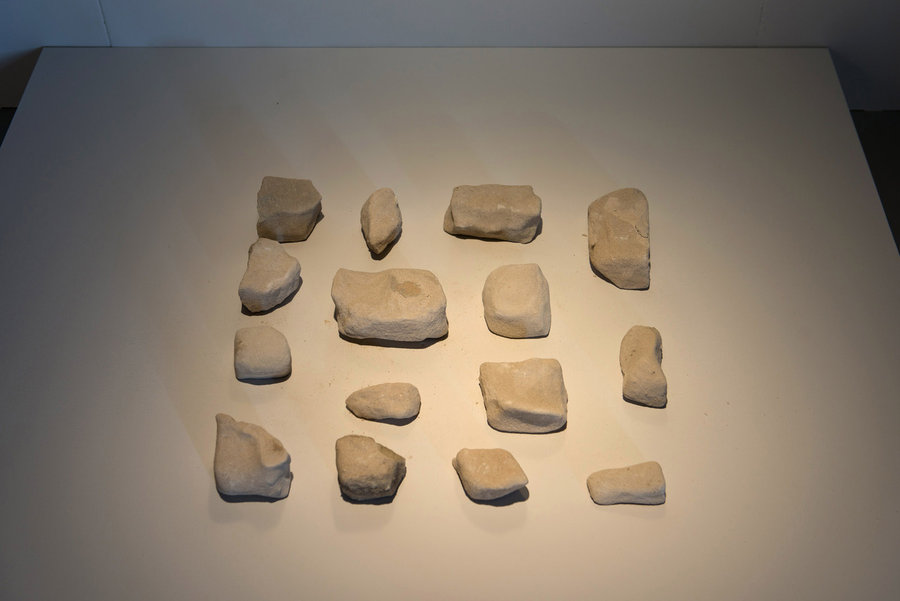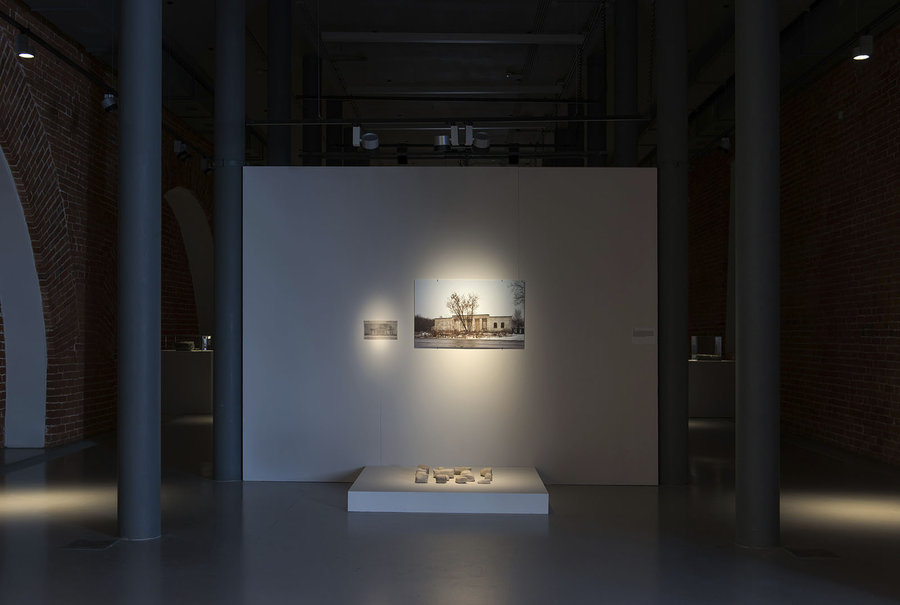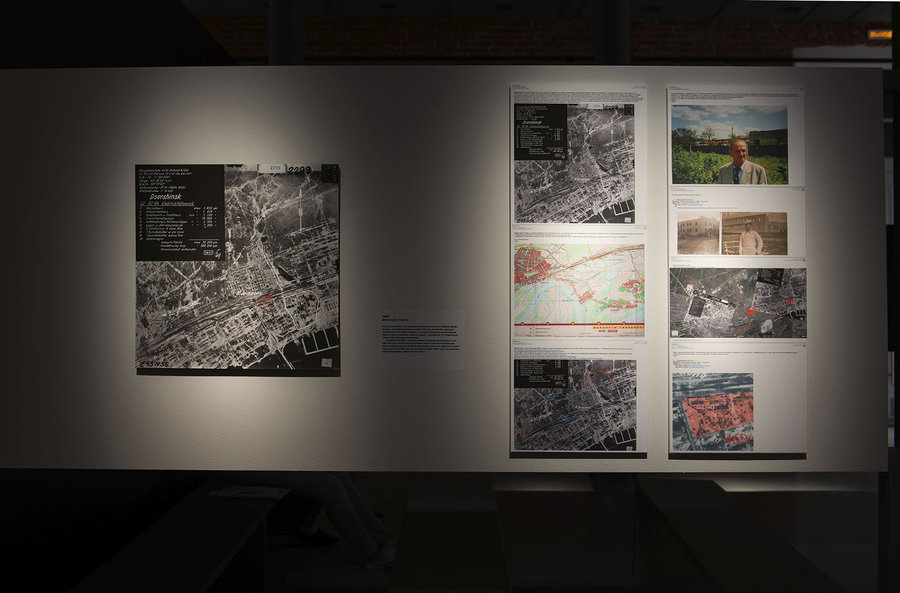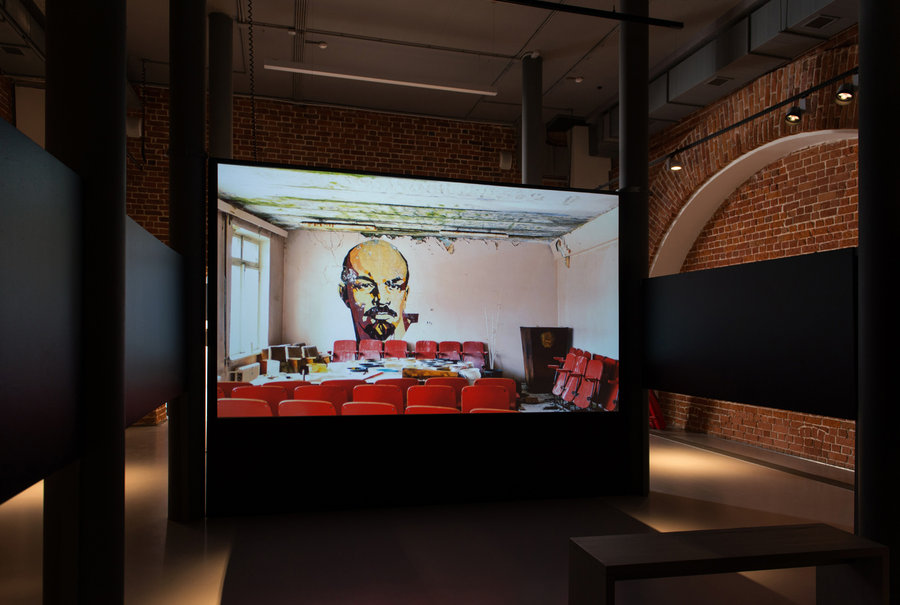| My project is inspired by my family history. I was born in Dzerzhinsk, the capital of Soviet chemical industry. Three generations of my family were labouring at the secret chemical factories. Those giant factories are lying in ruins now. On the place of the labour settlement is a dense forest. The memoirs of my grandmother seem to be a fairy-tale now. My project is about oblivion. I research how the real historical events turn into myths and how the nature retakes the spaces which were developed by people. Trees grow through concrete slabs and destroy the buildings. Soviet history was written as a heroic myth and has never come true in reality. Now it turns into ancient ruins.
The photos published in a factory newspaper are staged and well retouched. They represent anonymous characters constructed by the Soviet ideological machine. The real workers turn into a weak trace of ink on the yellowed paper. |
Such photos testify rather to the general official style and iconography of the 1930s, 1950s and 1970s which the photographer followed, than to the models.
There are many uncovered reservoirs with chemical tailings around Dzerzhinsk. The most famous ones are informally called “White Sea” and “Black Hole”. The first one is one the biggest in the world. The second one is the most dirty place on the Earth according to the book of Guinness. The tailing reservoirs conserve the historical memory. It slices guard the witness that was not transformed by the ideological machine and has eluded from the mythologization. The tailing reservoirs are the dumps of history, which remain even when the myth is dismantled and the memory of the past have become a fairy-tale. It is an “insoluble residue” of the memory that contains all the horror of reality. |
Hall of Fame. 2016. painting, installation. NCCA Arsenal, Nizhny Novgorod
Hall of Fame. 2016. painting, installation. NCCA Arsenal, Nizhny Novgorod
Hall of Fame. 2016. Fragment of installation. NCCA Arsenal, Nizhny Novgorod
Hall of Fame. 2016. Fragment of installation. NCCA Arsenal, Nizhny Novgorod
Hall of Fame. 2016. Fragment of installation. NCCA Arsenal, Nizhny Novgorod
Hall of Fame. 2016. Fragment of installation. NCCA Arsenal, Nizhny Novgorod
White sea. Installation view. 2016. NCCA Arsenal, Nizhny Novgorod
56.2354828/43.5809789. 2016. mixed media, 252,5х300,5 Sergey Kuryokhin Modern Art Center, St. Petersburg
Black hole. Installation view. 2016. NCCA Arsenal, Nizhny Novgorod
White sea. Installation view. 2016. NCCA Arsenal, Nizhny Novgorod
White sea. Installation view. 2016. NCCA Arsenal, Nizhny Novgorod
Glory to Labor. 2016. oil on canvas, 180x260
Glory to Labor. 2016. oil on canvas, 180x260. Private collection
FAD. 2016. oil on canvas, 180x260
FAD. 2016. oil on canvas, 180x260
12.02.1960. 2016. acrylic on canvas 180х260
Monuments of Thriftlessness. Barrels. 2016. acrylic on canvas, 180x260
Monuments of Thriftlessness. Barrels. Fragment
Monuments of Thriftlessness. Interior. 2016. oil on canvas, 60x80
Holes. 2016. photo, digital print
Holes. 2016. photo, digital print
Rocks. 2016. Fragment of installation, NCCA Arsenal, Nizhny Novgorod
Rocks. 2016. installation, NCCA Arsenal, Nizhny Novgorod
Rocks. 2016. Fragment of installation, NCCA Arsenal, Nizhny Novgorod
Rocks. 2016. installation, NCCA Arsenal, Nizhny Novgorod
Claus. 2016. installation, NCCA Arsenal, Nizhny Novgorod
Subjects of Memory. 2016. film, 30'
Hall of Fame
The factory publishing was producing an image of a hero following the examples printed in “Pravda” - the head Soviet newspaper. Looking at such photos made by the Dzerzhinsk reporters we could recognize some interesting features.
- The quality of printing. An old equipment and a lot of defects in printing were caused by the order of economy of materials.
- Retouch of the photos. On the photos made in the 1930s we can see, that many details such as a tie or a jacket were drawn over the image. The stare of the hero was marked out, while the defects of the skin were erased. In the 1960s the retouch was not used any more.
- Technique of shooting and printing. Because of the bad quality of printing photographers were making pictures as contrasting as it was possible.
- Style of shooting. The style of shooting had been changing during the Soviet period. In the 1930s we find staged portraits with contrasted light. А dynamic diagonal composition was a feature of the photos made in the 1950s and 1960s. During the next decade it became common to make portraits of the labours with the factory equipment on the background. The iconography of the workers had also been changing from a hero and “stakhanovets” in the 1930s to a romantic man turning his eyes up to the radiant future in the 1950s and to an ordinary labour in the 1960s and 1970s. The models of the 1930s and 1950s are smartly dressed: they wear jackets and chemises and have beautiful haircuts. From the end of the 1960s people appear in press with their uniform on, their hair are covered with a casque or a cap. They do not pose and look very natural. All the models are lacking in any individual features. They are presented as exemplary heroes of their time. One of such portraits is of my grandmother. But a newspaper printing has transformed a face of my dear person according to a standard. So, I could not recognize my grandmother at first. Observing the Soviet newspaper portraits we find not a subject, but an object of a history - an anonymous man in his historical context.
Ruins
The picture represents a destroyed department of the “Plexiglas” factory. My grandfather, both grandmothers, my father and his sister were working at this factory.
My grandmother was producing chemical weapons and plexiglas for the military aircraft during the Second World War. After the war the factories started to work for the peaceful purposes: herbicides were used to destroy plants and for the agricultural needs. A big department of Simazin was opened in the early 1970s and was decorated with a big sign “Glory to Labor and Science”. My father was a schoolboy then, and took part in cleaning the area of debris. The department is being abandoned during last two decades. Birches are growing on its roof, and it seems to be their revenge to the factory which had produced toxin for plants.
Holes
The holes situated on the territory of the Voroshilovsky settlement used to be cellars. The were placed in the barns between houses. The houses are completely destroyed, even their bases have disappeared.The holes are the only evidences of the past. They were used not only to save food, but also as bomb shelters.
Stones
The building in the east side of the settlement is an unfinished Cultural Center of the “Rulon” factory. The building started in 1940, but the war interrupted the process.There were many other problems after the war so the building was not restarted. In the 1950s people started to move to Dzerzhinsk and to leave the settlement. The building of Cultural Center was used as a storage. Now there is a vegetable store of the prison nearby The silicate bricks used for the building were defective. Erosion and weathering turned them into wild stone which crumble hands. The stones which become a sand is a metaphor for oblivion.
12.02.1960
On 12th February 1960 the gas leak provoked an explosion in the 6th Department of the “Caprolactam” factory. A strong blast wave knocked out window frames and glasses not only in the settlements around the factory, but also at the territory of the Avtozavod which was located in 10 km from the explosion center All the members of the shift, who were working in that department , died, they were 25 people. Looking through the factory newspaper I could not find any published word about that tragedy. All the information about it was strictly kept in secret. KGB employees were controlling the funerals of the explosion victims. In the factory archives I found a picture with the explosion made from the copter. I stylized it as a newspaper picture and painted it on a large canvas to fill the vacuum in the historical memory.
Subjects of memory. 2016 video 30'
1. Village
2. Factory
3. Sludge

